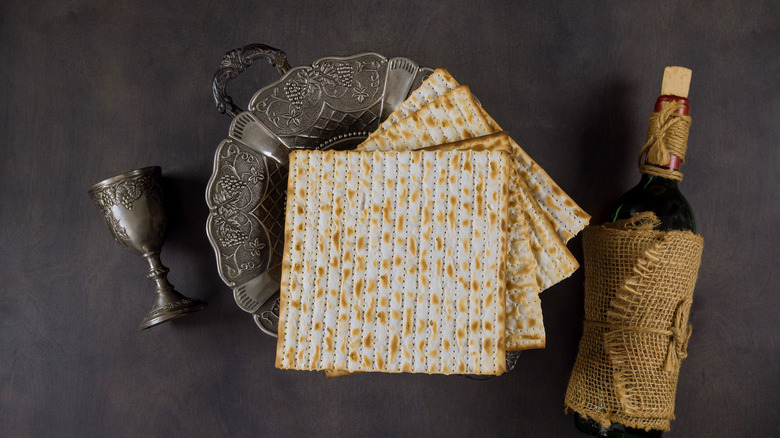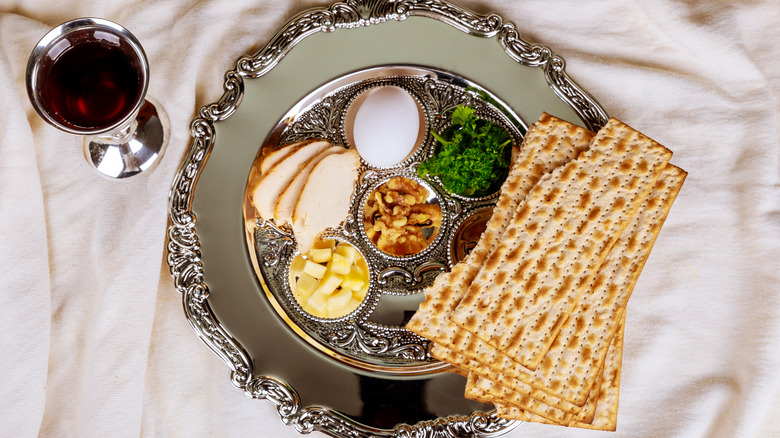The Symbolic Reason Matzo Is Eaten On Passover
Passover is one of Judaism's most revered holidays that commemorates the Israelites' (or Hebrews') liberation from slavery under ancient Egypt. It specifically refers to the way the angel of death mentioned in the Biblical book of Exodus passed over the homes of the Israelites who had marked their doorways with lamb's blood at the Lord's instruction. Passover is heavily celebrated over a period of seven days among Jewish people all over the world and includes numerous rules, celebrations, and practices, one of which is abstaining from any bread that contains yeast. In substitution, matzo (also called matzah) bread is eaten, which is a flat, cracker-like bread.
Because of this, Passover is sometimes referred to as the Feast of Unleavened Bread. Other dietary and work-related restrictions are put into place during the week of Passover, but eating matzo is, perhaps, one of the most recognized practices. It begins on the first day of Passover when a Seder meal is eaten. A Seder is a beautiful homage to Jewish history that involves all of the senses. Prayers are said and certain foods are eaten while telling the entire story of the Israelites journey to freedom over 3,000 years ago. For example, horseradish on the Seder plate represents the bitterness of slavery, and vegetables are dipped in salt water to symbolize the tears shed during captivity in Egypt. As you may have guessed, matzo also illustrates something historically significant.
A 3,000 year old tradition
Matzo, found on the Seder dinner plate and throughout the week of Passover, represents the Hebrews' suffering during enslavement (or limited food resources), and the way they had to quickly leave Egypt once they were set free. It was so swift, that they did not have time to add yeast to their bread dough before they left, thus, taking with them unleavened dough. Once they left Egypt, they wandered in the desert for 40 years, always on the move which also made it difficult to allow time for bread dough to rise. During Seder, matzo is broken and eaten in increments throughout, always symbolizing specific parts of the evening's ceremony.
During the week of Passover, matzo bread is often incorporated into recipes where yeasted bread may otherwise be used. It's famously used to make matzo balls for matzo ball soup, and helps create gefilte fish, another traditional Jewish food. Because matzo is dry, it can easily be crushed into matzo meal, allowing it to be used in many dishes, from fried chicken to dumplings to desserts. The idea behind using matzo for the week is to be a constant reminder of, and to reflect on, the Hebrews' redemption from enslavement. It is a tradition thousands of years old that Jewish families pass onto their children generation after generation so they may never forget their roots, which run deep.

